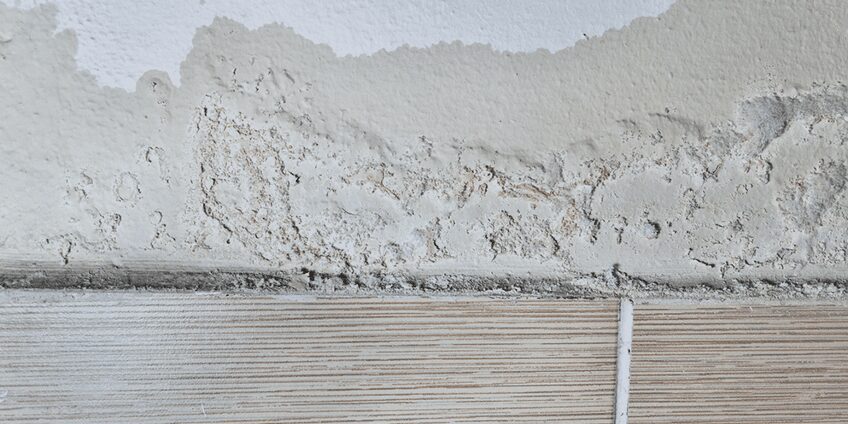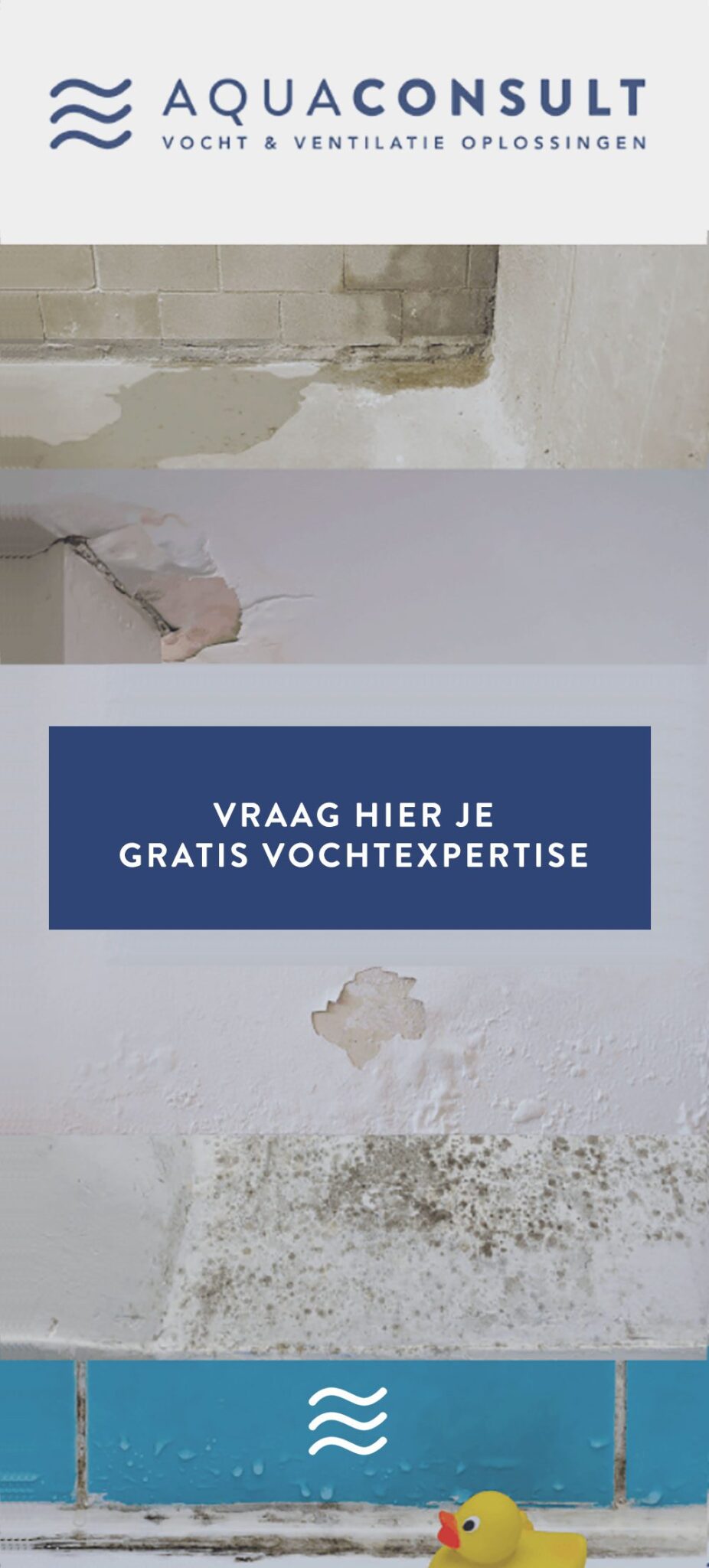Suffering from rising damp? Aquaconsult is here for you.
What is rising damp, how do you recognize it? And what can you do about it? AquaConsult answers all your questions.
Free diagnosis
Not sure if you're suffering from rising damp? Our experts are happy to help. Through a free moisture analysis, we can determine exactly what the problem is. After all, a good moisture diagnosis is essential to finding an appropriate solution.
Contact our specialists for more info.
What is rising or rising damp?
One of the causes of moisture in the wall is rising damp. At the same time, it is also the most common moisture problem. Rising damp only occurs on the ground floor.
With rising damp, groundwater is the big culprit. The grondwater is absorbed by the foundation and walls, so the worst moisture spots are near the ground, but it can always spread further into the wall. Both interior and exterior walls can be severely damaged as a result.
What causes rising damp?
Rising damp is especially common in older houses, but new construction houses can also suffer from it. Usually it is because a mistake happened in the building structure (and usually the foundation) . In both cases, we are usually talking about houses that have problems with the water barrier.
A water barrier is the waterproof protective layer that prevents groundwater from penetrating the walls. When this water barrier is missing or damaged at ground level, the walls will absorb groundwater like a sponge. The capillary action of the walls causes the moisture to be transported upward. This causes you to suffer from rising damp.

What are the consequences of rising damp?
Rising or rising damp is associated with numerous negative consequences. First and foremost, it is very unhealthy for your home and your walls. It reduces the strength of walls, causing structural damage:
- Damage is most visible on interior walls. These include mold, discoloration, moisture spots, loose plaster and a musty smell.
- Structural damage occurs mostly on exterior walls. In freezing weather, the moisture in the wall can freeze, causing cracks in the wall.
- In addition, rising moisture creates high humidity, which causes you to need more energy to warm the same room. The more humid the air, the more energy you need. In the worst cases, your energy bill can cost up to 10% more.
- Also, rising damp - like other moisture problems - can cause health problems. High humidity causes frequent colds and, in some cases, can also cause rashes. In addition to high humidity, mold is also a problem. Mold often causes respiratory and lung problems. Especially in children, the elderly, or people who already have underlying respiratory problems (such as asthma).
How do I recognize rising damp?
Rising damp always expresses itself just above the surface level. As a result, rising damp only occurs on the ground floor or in the basement. On the interior walls, you recognize rising damp first and foremost by the height: do the moisture spots occur mainly close to the ground? Then it is most likely groundwater rising to the top of the walls.
On interior walls, you can recognize rising damp by the following symptoms:
- Discolored plaster,
- Crumbling plaster,
- White salt circles or spots,
- Loose wallpaper,
- Finishing the wall coming loose,
- Mold,
- Or a musty smell.
In winter, the moisture in the walls freezes causing the moisture to expand. Thus, in the exterior walls, you can also sometimes notice broken joints. In many cases, the basement is also affected by rising damp. This is because a basement is surrounded by groundwater. But rising damp does not only occur in winter. You can also suffer from this moisture problem in the summer.
We as experts can use a moisture meter to determine the moisture level at a certain height in the wall. If the moisture is only close to the ground on the ground floor, we are clearly talking about rising damp.

What can I do about rising damp?
First of all, it is important to have a specialist in moisture control make the correct diagnosis. Because every moisture problem requires a different approach, and only with a correct diagnosis can correct action be taken.
With rising damp, the most appropriate approach is to inject the walls against moisture.
- In this process, experts drill holes in the damp wall and inject those holes with moisture-resistant gel.
- That gel then spreads deep into the pores of the wall and, once cured, forms a permanent horizontal barrier.
AquaConsult uses REWAHGEL Inject 3A+ as a moisture resistant gel. This is the highest qualification you can find; therefore, we use only the best quality to help you. REWAHGEL Inject 3A+ is solvent-free, odorless and non-caustic. We can use it without health hazard in inhabited areas and it is non-flammable. This injection gel has been used for many years and has proven its effectiveness several times through tests. It is therefore a result of thorough research.
For treating rising damp, you may have a chance at My Remodeling Premium.
How does AquaConsult proceed?
Do you want to rid your home of rising damp, and to do so you engage the experts at AquaConsult? Then you can count on the following approach:
- First of all, one of our field engineers will visit you to make a proper diagnosis. This is very important so we can help you in the best way.
- Has rising damp been identified? Then professionals will come to you to treat the wall. This involves first removing the affected layers of plaster so that we can prepare the wall for the injection of the damp-proofing gel.
- Once the walls are injected with the gel and the plaster layers are reapplied, you have to count on an 8-12 week drying process before you can decorate the wall again.
Do you suffer from damp walls? Then contact Aquaconsult and our specialists will come by for a free moisture assessment, wherever you live in Flanders.
Request more information and brochure
Answer the questions below and get more information and our brochure.



